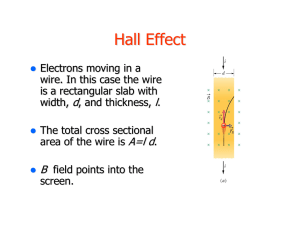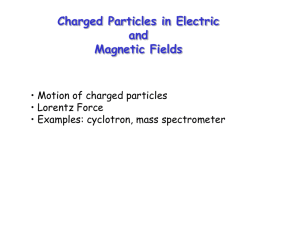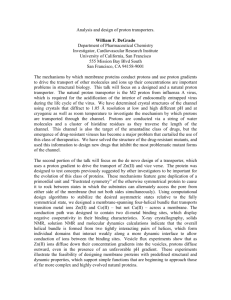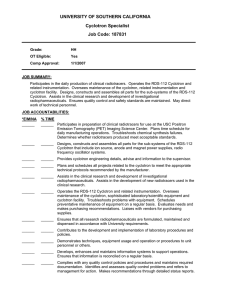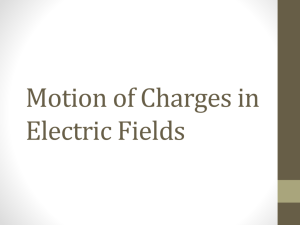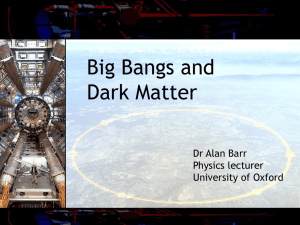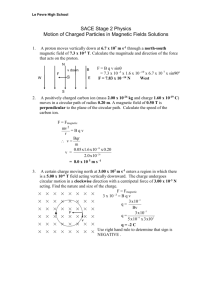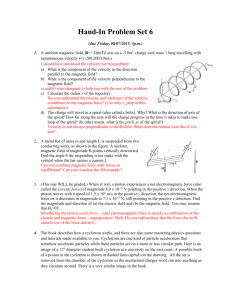TAP 413- 4: The cyclotron - Teaching Advanced Physics
advertisement
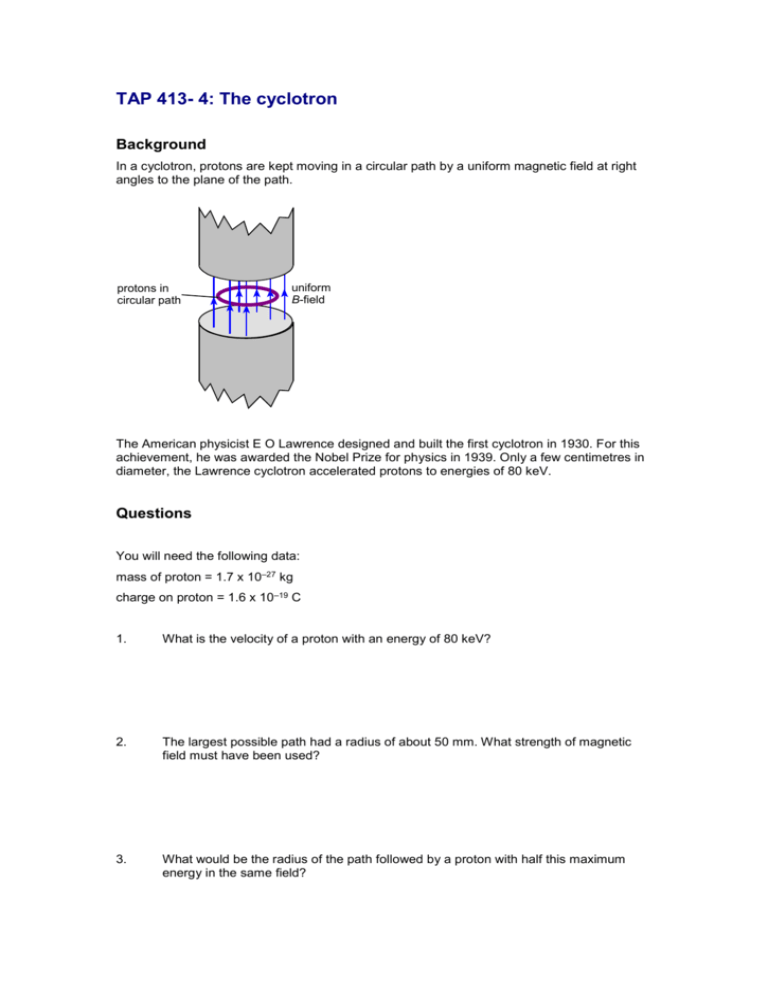
TAP 413- 4: The cyclotron Background In a cyclotron, protons are kept moving in a circular path by a uniform magnetic field at right angles to the plane of the path. protons in circular path uniform B-field The American physicist E O Lawrence designed and built the first cyclotron in 1930. For this achievement, he was awarded the Nobel Prize for physics in 1939. Only a few centimetres in diameter, the Lawrence cyclotron accelerated protons to energies of 80 keV. Questions You will need the following data: mass of proton = 1.7 x 10–27 kg charge on proton = 1.6 x 10–19 C 1. What is the velocity of a proton with an energy of 80 keV? 2. The largest possible path had a radius of about 50 mm. What strength of magnetic field must have been used? 3. What would be the radius of the path followed by a proton with half this maximum energy in the same field? 4. How long would it take 80 keV protons to travel once round their path? How long would it take for those with half this energy? Constructed of two D -shaped chambers (later called ‘dees’ because of their shape), the cyclotron worked by giving particles of any energy, on their respective paths, a push every time they had completed half an orbit. push push beam of protons 5. How was it possible for particles of differing energy all to be accelerated together? Practical advice This is something your more able students may enjoy thinking about. It is instructive for students to realise that even such a crude and simple device represented a major advance in particle physics, providing a source of high-energy particles that could be fired at atomic nuclei, to probe their structure. Lawrence had done a calculation of the necessary length for a linear accelerator to produce protons with energies of a million eV. He realised his laboratory was too small, and that set him thinking about bending the accelerator so that protons would travel in a spiral. Each time the protons crossed the gap between ‘dees’, they would be accelerated. To make his cyclotron work, he needed a good vacuum in the chambers and very high-frequency electrical oscillator to alternate the polarity of the ‘dee’ chambers. A key idea, that radius is proportional to speed, is accessible to A-level analysis. Half a century later Edwin McMillan, another great American particle physicist, said of the cyclotron: ‘I consider this to be the single most important invention in the history of accelerators; it brought forth a basic idea of great power, and one capable of later elaborations and variations … All the big proton synchrotrons are really just an extension of the cyclotron principle. Answers and worked solutions 1. 2E m v 2 80 10 3 (1.6 10 19 J) 1.7 10 27 kg 3.9 10 6 m s 1. 2. F BQv mv 2 r so B mv Qr (1.7 10 27 kg) (3.88 10 6 m s 1 ) (1.6 10 19 C) (50 10 3 m) 0.82 T. 3. Since v E, v and 1 2 (3.9 10 6 m s 1 ) r mv QB (1.7 10 27 kg) (3.9 10 6 m s 1 ) (1.6 10 19 C) 0.82 T 2 0.036 m 36 mm. 4. T 2r v 2 50 10 3 m 3.88 10 6 m s 1 8.1 10 8 s since r 5. mv , r v QB and T is the same for all paths. The time it takes for a particle to go around is independent of its speed (and energy). As it gets faster, the particle spirals out into orbits with larger and larger radii. So all particles can be accelerated across a ‘dee’ gap at the same time. External reference This activity is taken from Advancing Physics chapter 16, 100S
